Who Invented Pickleball? Unlikely History Of The Sport
A Creative Twist On An Old Classic

From Canine Inspiration to Court Domination
There are few topics as charmingly offbeat as the origins of pickleball. You've probably heard the buzz about this fast-growing sport, but do you know where it all started? Who invented pickleball? And how did pickleball get its name? Buckle up for a deep-dive into pickleball's quirky, unexpected history.
1965: Invention and Inventors
"What is pickleball?" "who invented pickleball?" "why is pickleball called pickleball?" you might ask. Our story begins in 1965 on Bainbridge Island, Washington, with three dads - Joel Pritchard, Bill Bell, and Barney McCallum. Home from golf one summer afternoon, they found their kids bored and restless. Unable to locate the shuttlecock for a game of badminton, they opted for a wiffle ball and makeshift paddles, thus setting the stage for a sport that would eventually sweep the nation.
For the court, they used Pritchard's old badminton court. But, how exactly did we get from a badminton court to a modern day pickleball court? Where did pickleball court dimensions come from?
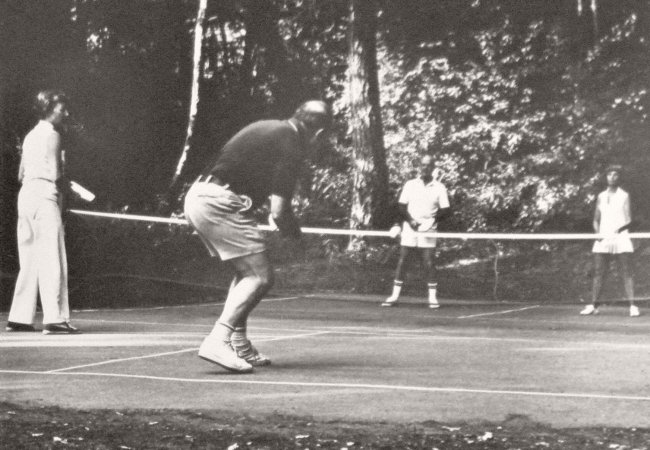
The Genesis of the Pickleball Court
In the game's nascent stage, the founders used what was available to them - Pritchard's backyard badminton court. For anyone who's ever played badminton, imagine trying to smack a wiffle ball, with its distinctive light weight and holes, over a 5-foot tall badminton net – more often than not, that ball is hitting the net. It soon became clear that the net height would need to be adjusted to accommodate their new game.
To resolve this, they lowered the net to 36 inches on the ends and 34 inches in the middle, making it easier for the wiffle ball to traverse for consistent play – the first of several modifications.

Next, the pickleball court size or pickleball court dimensions had to be adapted; the traditional badminton court was too long and too narrow for their new game. Pritchard, Bell, and McCallum started experimenting, setting the stage for a new sporting arena.
After a period of trial and error, they landed on pickleball court dimensions similar to current-day dimensions of pickleball court. They decided on a pickleball court size rectangular measuring 44 feet in length and 20 feet in width – just right for their unique game – spacious enough to allow dynamic movement and rallies, yet compact enough to keep the game social and engaging.
Included in the new layout was a 7-foot non-volley zone on either side of the net, affectionately known as the 'kitchen'. This area is crucial to pickleball's strategic gameplay, as players are prohibited from volleying (hitting the ball before it bounces) within this zone. The introduction of the kitchen was a significant move that further distinguished pickleball from its racket-sport cousins.
The pickleball court, much like the game of pickleball itself, is a creative, post-modern twist on an old classic. It's a testament to the ingenuity of the sport's founders, who molded an old badminton court in a playful experiment, that the sport is going as strong as it is today.

Decoding The Name – A Dog or a Boat?
Why is it called pickleball? How did the sport acquire its quirky and distinctive name?
Though there's debate on its validity, the most popular narrative that has been told and retold, is the tale of Pickles, the Pritchard's family dog. Per the legend, the sport drew its name from this fun-loving, ball-chasing canine who seemed to consider it his duty to retrieve the errant balls during the game. The players would often find themselves saying, "Pickles, drop the ball!" making it a kind of running joke, which eventually gave the sport its catchy title. So some say pickles is the answer to: why is pickleball is called pickleball?

Yet, as often happens with legends, there's more to the story. Joan Pritchard, Joel’s wife, later shed light on the real genesis of the name, debunking the Pickles narrative. According to her, the sport was not named after their playful pet but had a maritime connection. Joan revealed that she named the sport after the 'pickle boat', a term used in rowing.

The pickle boat traditionally was the last boat to return in a rowing race, made up of the leftover oarsmen, who hadn't been chosen for the primary or secondary boats. This motley crew of leftover oarsmen, coming from different boats and possessing diverse rowing skills, resonated with the nature of the sport they had created. Just as the pickle boat was a collection of diverse elements, pickleball was as well – a blend of various sports, including badminton, table tennis, and traditional tennis.
Joan saw the charm in this parallel, seeing their newly invented game as a pickle boat of the sporting world, hence the name "pickleball." It echoed the spirit of their game, a hodgepodge of elements that created something greater than the sum of its parts.
Thus, contrary to popular legend, pickleball owes its existence not to a four-legged friend's antics, but to a rowing term that captured the essence of this unique sport.
1972: From Backyard Game to National Sensation
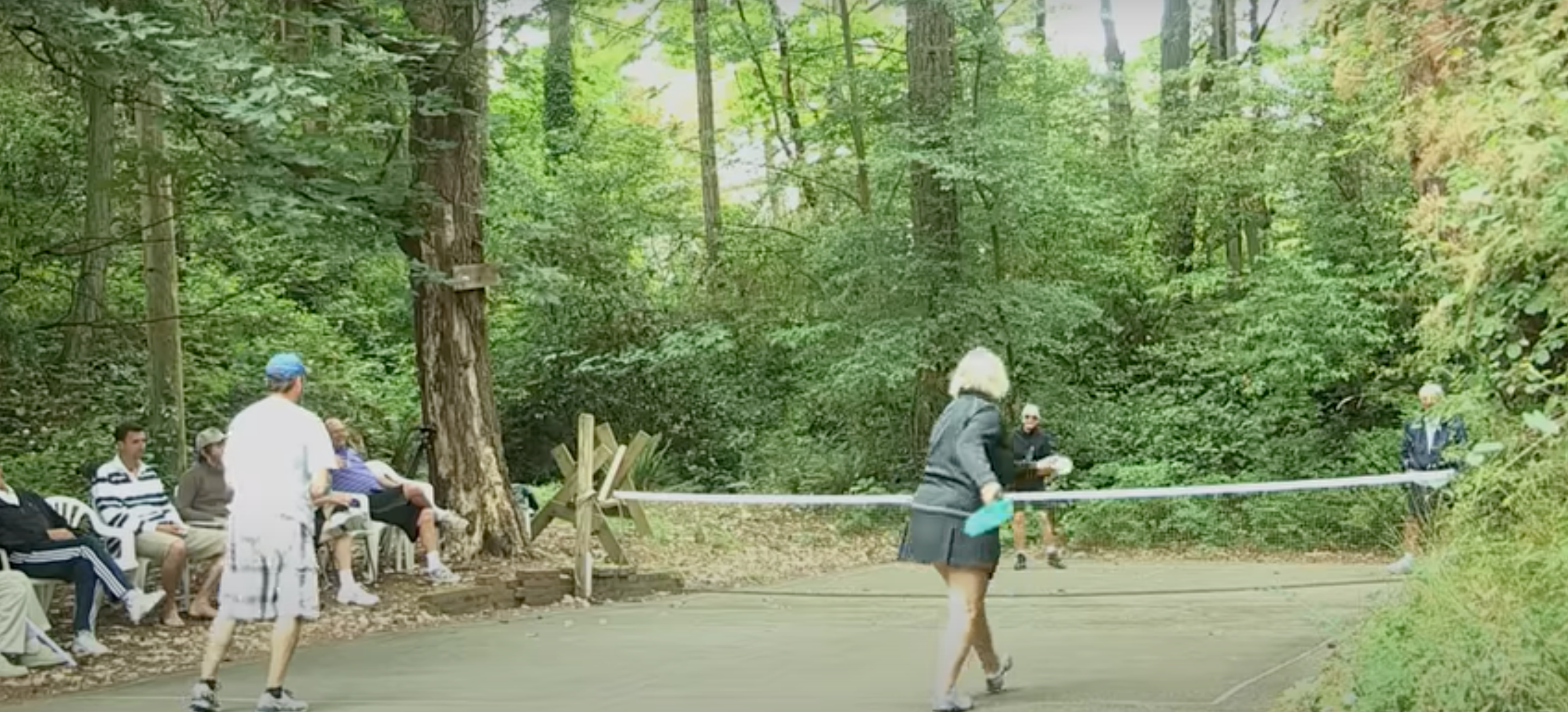
How did this humble backyard game evolve into a national sensation? The transformative journey of pickleball from a laid-back pastime to a recognized and celebrated sport is a tale of innovation, passion, and relentless pursuit.

Born out of a desire to entertain bored children on a summer afternoon in 1965, pickleball initially was a fun-filled family activity. But the turn of the decade brought with it an important milestone that significantly accelerated the growth of pickleball.
In 1972, Barney McCallum, a friend of the co-creators and an early adopter of the game, realized the potential this sport held. He took it upon himself to bring this sport out of the confines of backyards and introduced the first commercial pickleball paddles. McCallum's commercial venture marked a monumental leap for pickleball, making it accessible to a larger audience and fueling its popularity.
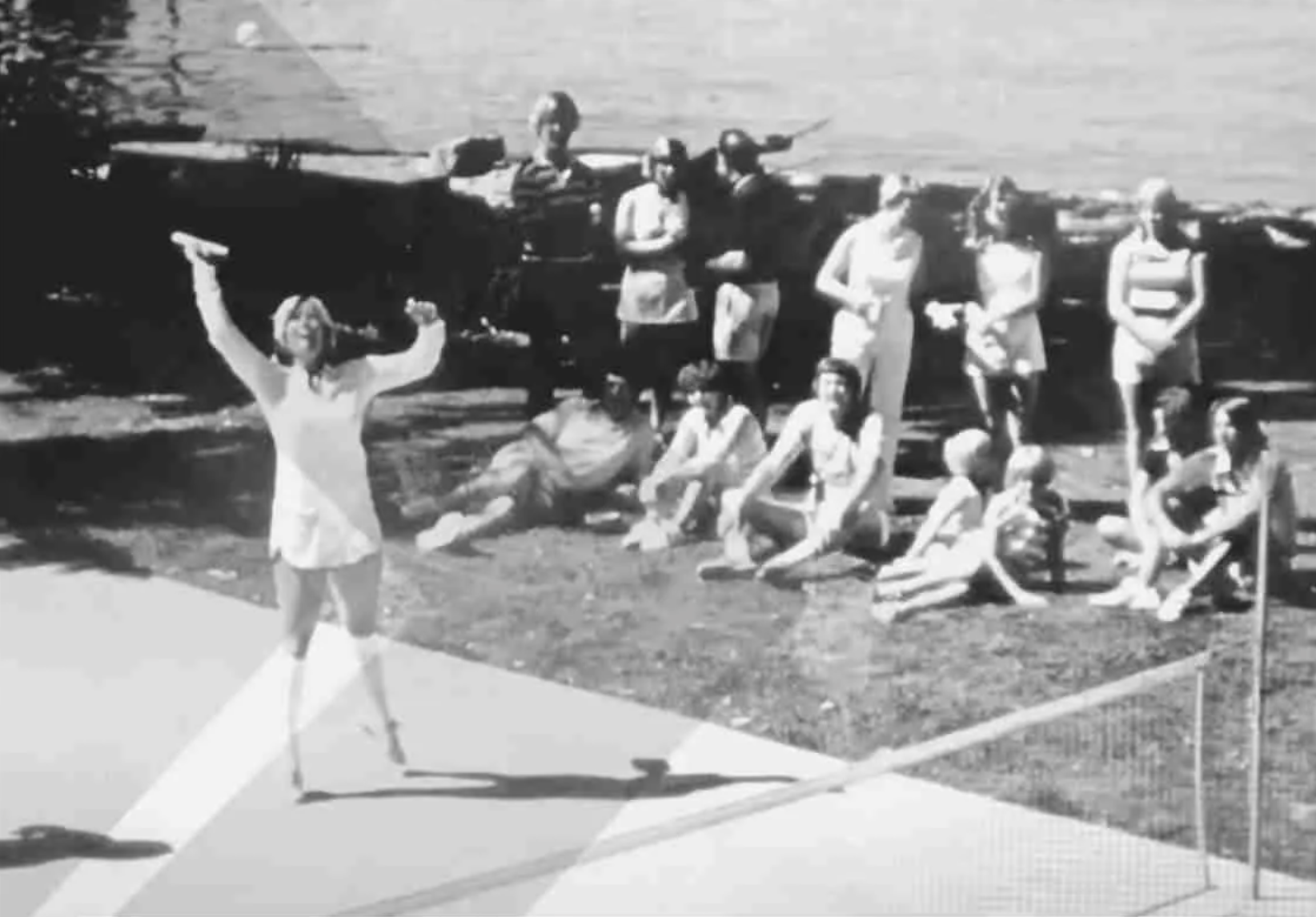
Building on the momentum, another pivotal moment arrived in 1975 when the first-ever official pickleball tournament was organized in the very place where it all began - Bainbridge Island. This event was much more than a sports competition; it was a definitive statement that pickleball had arrived on the national sports scene. With the success of this tournament, pickleball had indeed gone from being a recreational activity to an organized sport with a competitive spirit.
The event sparked a flurry of interest, with more and more communities across the country taking up the sport. Gradually, pickleball clubs started sprouting across the United States, and regional tournaments began to appear on sports calendars. It was during this period that pickleball transitioned from a homegrown game to a burgeoning sport that engaged people of all ages.
The fascinating journey of pickleball reminds us that sometimes, all it takes is a summer's afternoon of boredom, a few pieces of makeshift equipment, and an abundance of imagination to create a sport that resonates with millions. Today, as pickleball continues to capture hearts and minds across the globe, its humble beginnings in Bainbridge Island serve as a beautiful reminder of its roots and its remarkable journey.
1984: Widespread Appeal
In 1984, the pickleball world saw the founding of the USA Pickleball Association (USAPA) in 1984. This pivotal moment was instrumental in facilitating the sport's growth and popularity. With an aim to streamline the rules and expand the sport nationwide, the USAPA established a formal rulebook, a necessary move that would help foster fairness, consistency, and competitiveness in the sport.
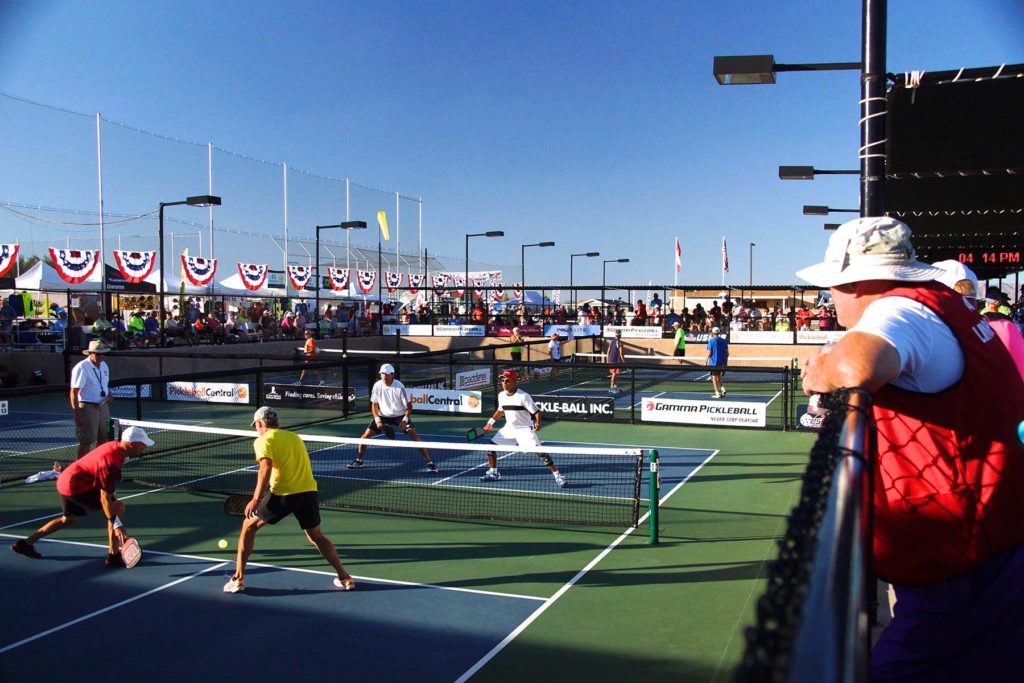
Photo Credit: USA Pickleball
The establishment of the USAPA was more than just the birth of a governing body for pickleball. It was the acknowledgement of pickleball as a serious, structured sport, rather than just a casual backyard game. Armed with the formal rulebook, the USAPA set out on a mission to spread pickleball beyond the confines of local communities and into more structured environments.
In a strategic move, the USAPA began introducing pickleball to schools, community centers, and PE programs across the country. The game, with its easy-to-understand rules, low-cost equipment, and ability to be played both indoors and outdoors, fit seamlessly into these environments. The sport quickly became a favorite, offering a fun and engaging way for people of all ages to stay active.
Fast forward to 1990, and the ripple effects of the USAPA's efforts were evident, when all 50 states across the country had active pickleball programs. This national acceptance underscored the sport's appeal and adaptability – a turning point for the new game.
From this point onward, pickleball's popularity started snowballing. Entering the 21st century, the sport saw unprecedented growth. Spreading from the U.S. to Canada and eventually worldwide, pickleball quickly caught the public's attention, becoming a hit amongst all age groups. By the turn of the millennium, pickleball had firmly cemented its place in the sporting landscape and was recognized as one of the fastest-growing sports in America.
2023: Pickleball Today
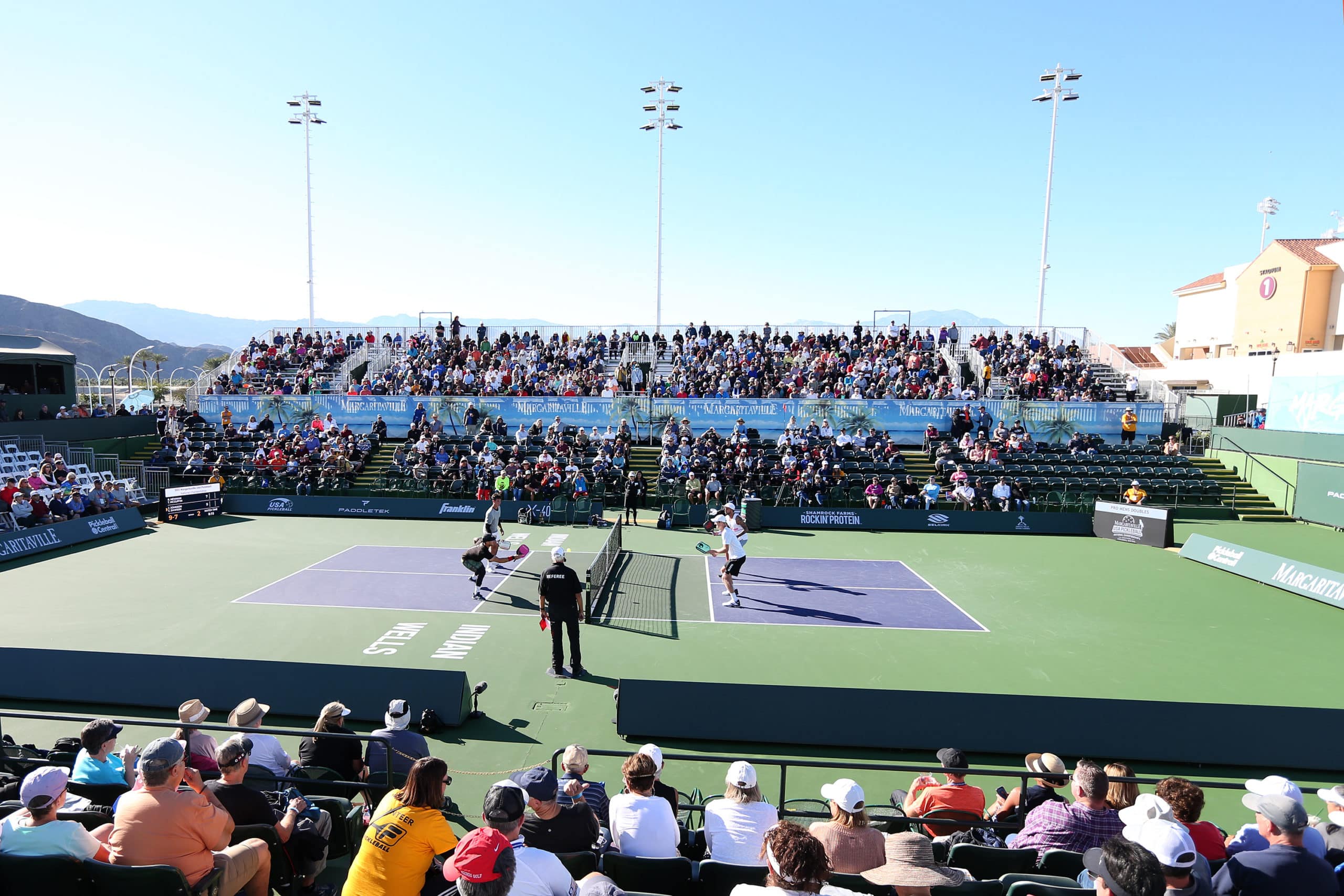
The world of pickleball has expanded exponentially since its inception over five decades ago. The United States alone now boasts over 39 million active pickleball players (a sharp increase from 3 million in 2020), an impressive number that underscores the sport's mass appeal and rapid growth. But the sport's influence stretches far beyond the American borders, with countless pickleball enthusiasts taking up the paddle worldwide.
The sport's appeal, which is almost universal, is rooted in its inclusivity. It is not limited by age or physical prowess. Whether you're a child or a senior, a seasoned athlete, or a beginner just dipping your toes into the world of sports, pickleball offers an inviting and level playing field. It's a game that people of all ages and skill levels can not only play but also thoroughly enjoy. The simplicity of its rules, combined with its energetic gameplay, makes pickleball both accessible and captivating.
Considering its humble origins as a solution for summertime boredom, it's quite remarkable to see the heights pickleball has reached today. Pickleball courts, once a rarity, are now a common sight in parks, sports clubs, and communities across the globe.
The sport's popularity is also reflected in the competitive arena. Pickleball tournaments have evolved from community-based events into large-scale competitions, organized at both national and international levels. These tournaments draw in thousands of players and spectators, offering a showcase for top-tier talent and a testament to the sport’s global impact.
But the ambition doesn’t stop there. The sport is aiming for the pinnacle of athletic achievement – the Olympic Games. The possibility of pickleball in future Olympics is a significant recognition of its global popularity and competitive allure. While the road to the Olympics may be long and complex, the fact that the conversation is even happening signifies how far this simple backyard game has come.
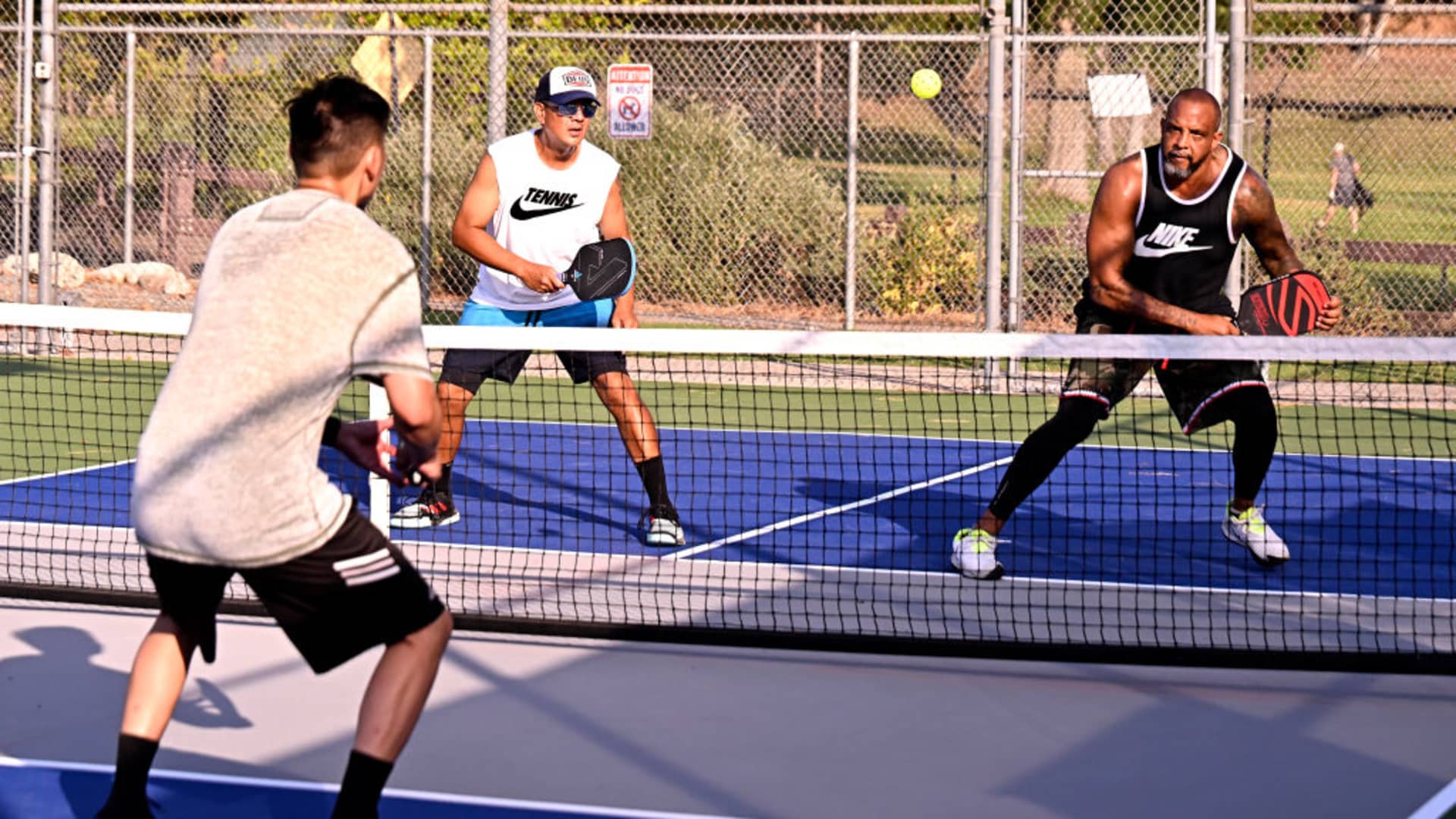
The Unstoppable Rise of Pickleball
What's the history of pickleball? Well, it's clear that it's a classic underdog story. Sprouting as an improvised game on a lazy summer day to becoming a sport with worldwide, global appeal, pickleball's journey is nothing short of remarkable.
When you hear the echo of a wiffle ball on a pickleball court, it's not just a game being played; it's the sound of a legacy that began over 50 years ago on Bainbridge Island and continues to write its history with every serve and volley.
The next time someone asks, "Who invented pickleball?" or "Why is it called pickleball?" or "How old is pickleball?" you can give them a story worth sharing. And who knows? You might just inspire them to pick up a paddle and join the phenomenon.

